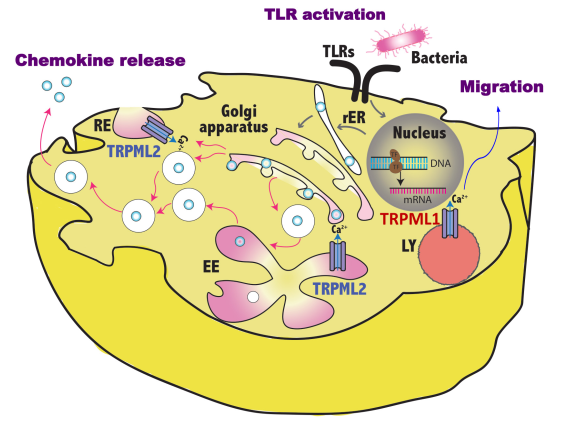| Drug Name | Berbamine analogues |
| Description |
Positive-sense single-stranded RNA ((+)ssRNA) viruses are among the leading causes of human and animal infectious diseases in the world. Berbamine is a natural compound isolated from herbs and is safe to be used in humans. In a number of studies, berbamine was showed to have a broad-spectrum anti-(+)ss RNA viral activity. Considering that the current Covid-19 pandemic has created a global health and economic crisis, berbamine analogues are being developed into an effective therapeutic agent for the prevention or treatment of coronaviruses. |
| Target | Transient receptor potential mucolipin family |
| Drug Modality | Small molecule |
| Indication | Coronaviruses, flaviviruses, enteroviruses |
| Product Category | Botanical |
| Mechanism of Action | Compromising the endolysosomal trafficking of viral receptors |
| Status | IND |
| Patent | Granted |
Protheragen Inc. is actively seeking partnership for berbamine analogues. Potential collaboration can be strategic alliance, licensing, or marketing agreement.
We look forward to hearing from you.
The transient receptor potential (TRP) superfamily is comprised of 28 mammalian cation channels and is classified into six subfamilies, including TRPA (ankyrin), TRPV (vanilloid), TRPM (melastatin), TRPC (canonical), TRPP (polycystin), and TRPML (mucolipin).
TRPMLs are ion channels expressed in intracellular endosomes and lysosomes. The three proteins TRPML1, TRPML2 and TRPML3 are encoded by the mucolipin-1 (MCOLN1), mucolipin-2 (MCOLN2) and mucolipin-3 (MCOLN3) genes, respectively. TRPML1, TRPML2, and TRPML3 are localized in the lysosome-associated membrane protein (Lamp-1)+ or Rab7+ late endosomal and lysosomal (LEL) compartment. These channels are tetramers, consisting of proteins with six transmembrane-spanning domains and amino- and carboxy-terminal tails oriented toward the cytosol. Three TRPML subtypes share about 40% of amino acid sequence identity.
All TRPMLs could be activated by phosphatidylinositol-3,5-biphosphate (PtdIns(3, 5)P2) and play a role in membrane trafficking autophagy, exocytosis, and ion homeostasis.
Libraries of natural compounds are screened through high-content fluorescence imaging platform to identify more efficient and specific endosomal trafficking modulators. Several bis-benzylisoquinoline alkaloids, especially berbamine, were found to potently suppress the infection of many positive-sense single-stranded RNA viruses. Berbamine analogues are being developed into next generation antiviral small molecule.
Positive-sense single-stranded RNA viruses, including coronaviruses, flaviviruses, and enteroviruses, are a leading cause of human and animal infectious diseases around the world. As a new coronavirus, SARS-CoV-2 causes febrile respiratory illness and was officially named coronavirus disease 2019 (Covid-19) by WHO.
Following the initial leap across the species barrier, SARS-CoV-2 spreads rapidly among humans and plagued the whole world within three months. According to WHO, as of September 7, 2020, more than 27 million laboratory-confirmed cases and 881,464 deaths from Covid-19 worldwide have been reported. There is currently no effective clinical treatment against Covid-19.
The activation of TRPMLs via PI(3,5)P2 can trigger the release Ca2+ from endosomes and lysosomes, which participates in various endolysosomal trafficking events, including trafficking of endosomal vesicles, fusion of late endosomes and lysosomes, and lysosome-mediated exocytosis.
Berbamine could inhibit the activity of TRPMLs to compromise the endolysomal trafficking of membrane receptors for (+)ss RNA viruses. The accumulation of endosomes leads to an increased level of secretion of these receptors via extracellular vesicles and a concomitant decrease in the virus receptor levels at the plasma membrane. The decrease in the amount of virus receptors renders the cell resistant to virus infection. Thus, berbamine prevents the entry of (+)ss RNA viruses in host cells.

Figure. Schematic representation of TRPMLs involvement in the regulation of vesicles trafficking induced by pathogen sensing.
Front Immunol. 2020 Apr 29;11:739.
Preclinical studies have been completed. The IND approvals have been received for the berbamine analogues. Global or regional rights are available for out-licensing.
